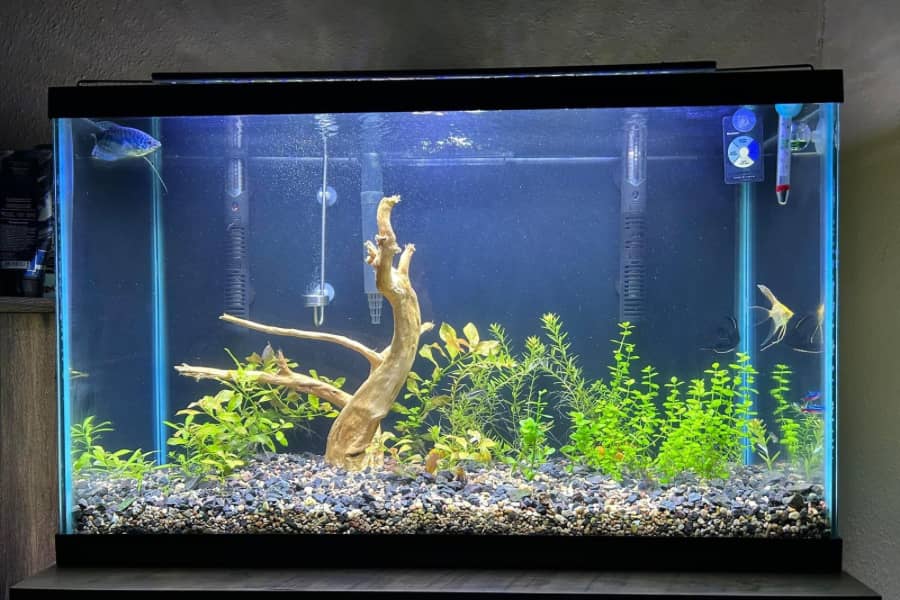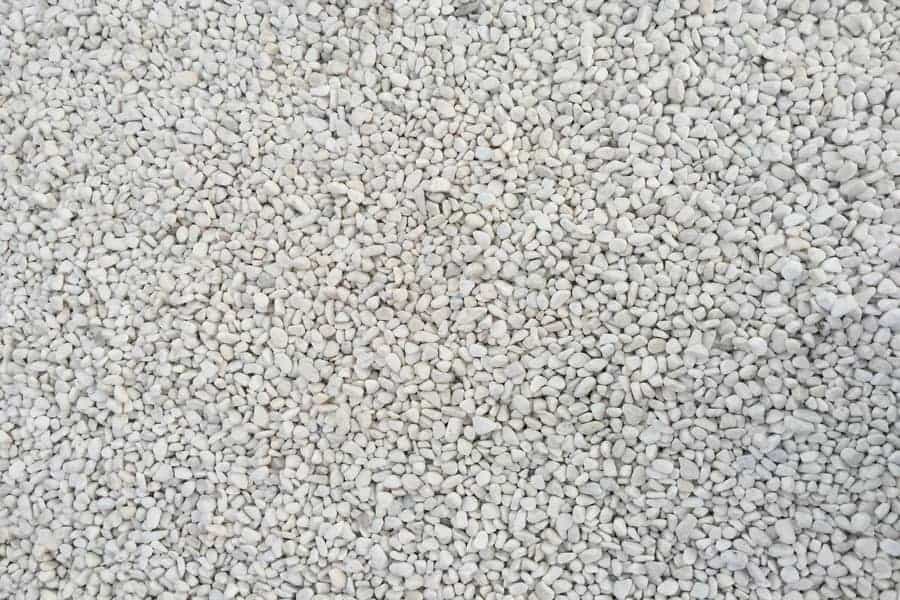How Often Should You Change Gravel In A Fish Tank?
This post may contain affiliate links.
Choosing the right substrate for your tank is challenging, but it’s equally important to know how to maintain it. The most common material used for the substrate layer in fish tanks is gravel; however, there are many different gravel types, and each type works better for some fish than others. How often should you change the gravel in a fish tank?
This article will look at how often you should change gravel in your aquarium, what aquarium gravel is for, and whether it’s safe to use stone from your yard or not. I will also show you how to test new rocks or gravel before putting it into your aquarium. Finally, I’ll explain when you should not use substrate.
When Should You Change the Gravel in a Fish Tank?

It’s better to avoid changing the gravel as much as possible. Most of the friendly bacteria that break down waste are found in your substrate level, and changing the gravel will negatively impact bacterial colonies. Instead of changing your gravel, vacuum it when you change the water.
Some of the signs your gravel needs cleaning include:
- Visible dirt, like fish poop: if you can see a lot of dirt, whether it’s poop or food particles, it’s probably time to vacuum your gravel. However, don’t assume your tank is clean just because you can’t see any dirt. Particles of food, poo, or plant matter can linger underneath your substrate, especially if you have fish who like to burrow.
- High levels of ammonia: if you’re getting high levels of ammonia when you test your tank water, you need to clean your tank. Ammonia comes from fish poo and decaying food and is toxic to your fish. I recommend testing your aquarium water regularly with API 5-in-1 Aquarium Test Kit (available on Amazon.com). You can use it for ponds or aquariums, and it comes with large, easy-to-read testing strips.
- Small, white worms living in the substrate: otherwise known as detritus worms, the white worms in your substrate will eat decaying matter but can be harmful to your tank. If you’ve got lots of worms, it’s a sign that there’s a lot of dirt in your substrate.
How Often Should You Clean the Gravel?
It depends on the number of fish you have in your tank. The heavier your fish load is, the more frequently you’ll need to do water changes and vacuum your substrate. You may also have to clean the tank more often if you have substrate-dwelling fish like plecos (Loricariidae) or lots of burrowing fish.
It’s advisable to clean your tank more regularly if you feed your fish on vegetables or fresh meat, as these foods are messy and cause a lot of problems with your water chemistry when they decay.
If you’re unsure which substrate to choose, check out this video by Big Al’s:
What Is Aquarium Gravel For?
It’s easy to think aquarium gravel is just for decoration. It looks nicer than a bare glass bottom, after all, but there are several fundamental reasons why your pets need substrate:
- Filtration and cleanliness: gravel provides a habitat for friendly bacteria that break down the junk in your tank, like fish poo. Without gravel, you won’t have enough of these bacteria, and you’ll have to change the water much more often to keep your tank clean and healthy.
- Natural habitat: fish like a substrate for burrowing, resting, and feeding. It offers them a much more natural environment to live and behave naturally in. Some fish species won’t survive long without substrate, and many others will not thrive without it.
- Plants: if you intend on anchoring plants (live or artificial) in your tank, some form of the substrate is necessary.
- Decoration: tanks with rocks or gravel tend to look much nicer than bare tanks. You’ll also get a better view of your fish against gravel than you will against the glass.
- Fish health: some people find bare-bottomed tanks stress fish out. The extra glass creates reflections, which can distress your fish. If you want to get a good view of your fish to check their health, this will be much easier against substrate than against glass.
How to Add Gravel to a Fish Tank?

You should always add the gravel to a tank before anything else, including water. Gravel may not settle if you tip it into a full tank, and you will get more food particles decaying in the bottom of your tank. Chemicals created during decay are then released into the water, harming your fish.
Before you add the substrate to your tank, you’ll need to rinse it thoroughly. Rinse your gravel several times, but don’t use soap or cleaning chemicals. The only thing you’ll need is an aquarium-safe dechlorinating agent. I recommend API’s Stress Zyme Bacterial Cleaner (available on Amazon.com). It comes in saltwater and freshwater types and can be purchased in various sizes, ranging from 4 oz (0.11 l) to 1 gallon (3.78 l).
How Can You Tell if New Rocks or Gravel Will Harm Your Fish?

The best way to check that your new gravel won’t harm your pets is to leave the substrate in a bucket of your tank water for at least a week. Next, test the water the same way you’d test the tank water. If you find significant differences in the water chemistry, the rocks or gravel you’ve chosen is likely to cause problems in your tank.
If you stick to the pet-safe substrate from aquarium stores, you’ll know the gravel is safe for aquariums. However, read the packaging carefully, as every tank is different, and some packages may be unsuitable for particular aquariums or specific fish species.
It would be best if you were especially wary of brightly colored gravels that are not aquarium products, as paint or dye may leach into your water and poison your fish. Some fishkeepers say that colored gravel is distressing to fish, but others have no issues with it.
Can You Use Stones or Gravel From Your Yard in Your Aquarium?
It’s not recommended that you gather gravel or rocks for your aquarium. Outdoor rocks could contain contaminants, pests, or diseases that could affect your fish. You may also run the risk of disturbing natural ecosystems by removing the gravel or stones they’re built around.
It’s better to opt for the aquarium-safe substrate from pet or aquarium stores. That way, you know the gravel doesn’t contain anything harmful to your tank, like calcium.
When Not to Use Substrate?
Don’t use substrate in a hospital or quarantine tank, as the gravel may trap bacteria that could infect the next fish you put in the tank.
You may also want to use a bare-bottomed tank in a nursery tank, as it’s easier to spot fry. Otherwise, you may end up sucking them up during water changes.
Conclusion
In this article, I explained when you should change your gravel, clean it, and what the gravel in your aquarium is for. I also showed you how to add gravel to your fish tank and how to test your new gravel or rocks before you put them into your fish tank. Finally, I looked at whether you can use stone from outside in your tank and when not to use any substrate materials.
